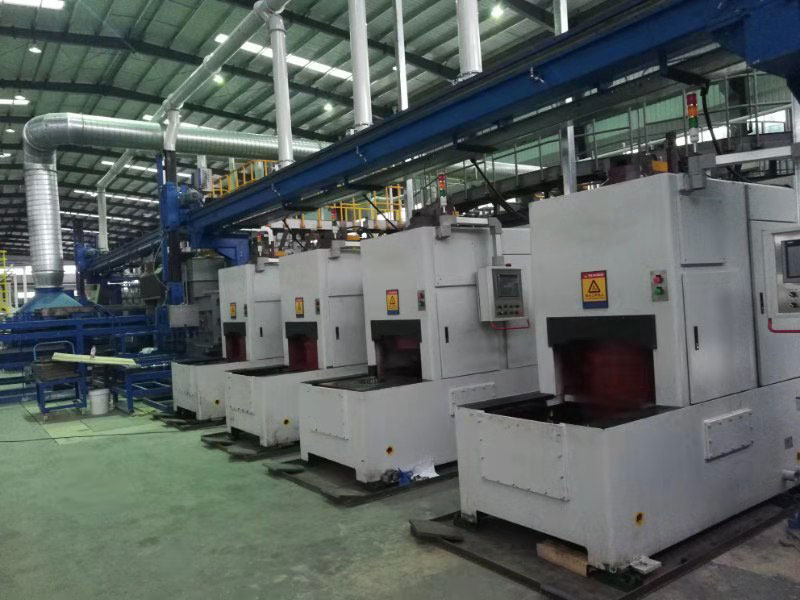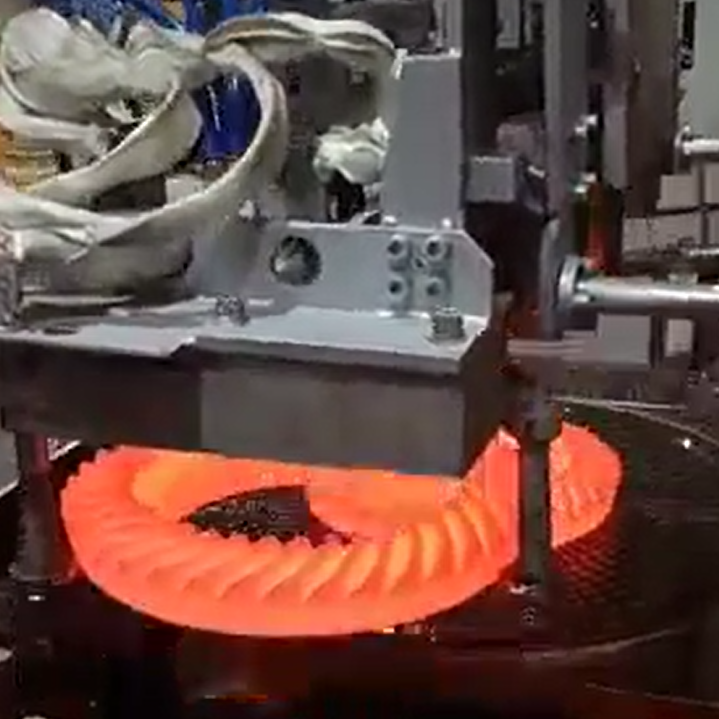How does a CNC quenching press work?
The CNC quenching press is a precision heat treatment equipment designed for complex workpieces such as bevel gears. It integrates advanced induction heating technology and CNC automation control. It is widely used in multiple industries such as automobiles, aerospace, and engineering machinery to improve the wear resistance and fatigue strength of bevel gears.

In terms of working principle, the CNC quenching press first drives the induction coil through the alternating current generated by the medium and high frequency power supply to quickly and locally heat the surface of the bevel gear placed in a specific fixture. When the surface temperature of the workpiece reaches the required quenching temperature (usually determined by the material properties), the system immediately starts the cooling process and uses high-pressure quenching liquid or gas to rapidly cool the heated area. This process is called quenching.
The control of the cooling rate is crucial to forming an ideal martensitic structure, thereby improving the hardness and wear resistance of the workpiece. The entire heating and cooling process is precisely controlled by the CNC system to ensure temperature uniformity and consistency in the depth of the quenching layer.

The processing objects are mainly various types of bevel gears, including but not limited to automobile main reducer gears, differential gears, etc. These gears must undergo precise quenching treatment to meet the performance requirements due to their unique geometry and high torque and wear resistance requirements.
The CNC quenching press can process bevel gears with a wide range of diameters. Through customized induction coils and precise positioning devices, even complex contours can be precisely quenched, reducing heat treatment deformation, ensuring precise positioning of the gears and uniform tooth surface hardness, ultimately improving the service life and transmission efficiency of the gears.


